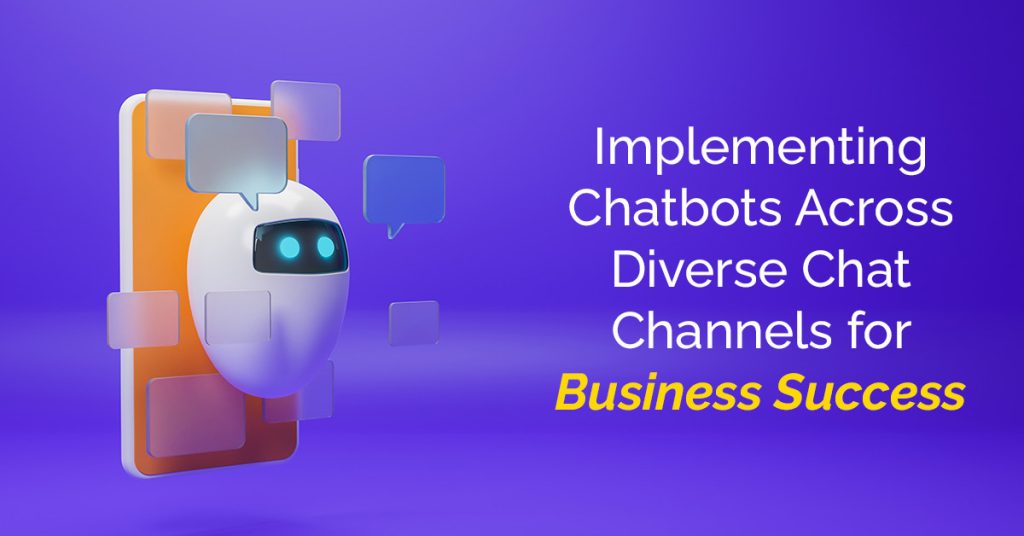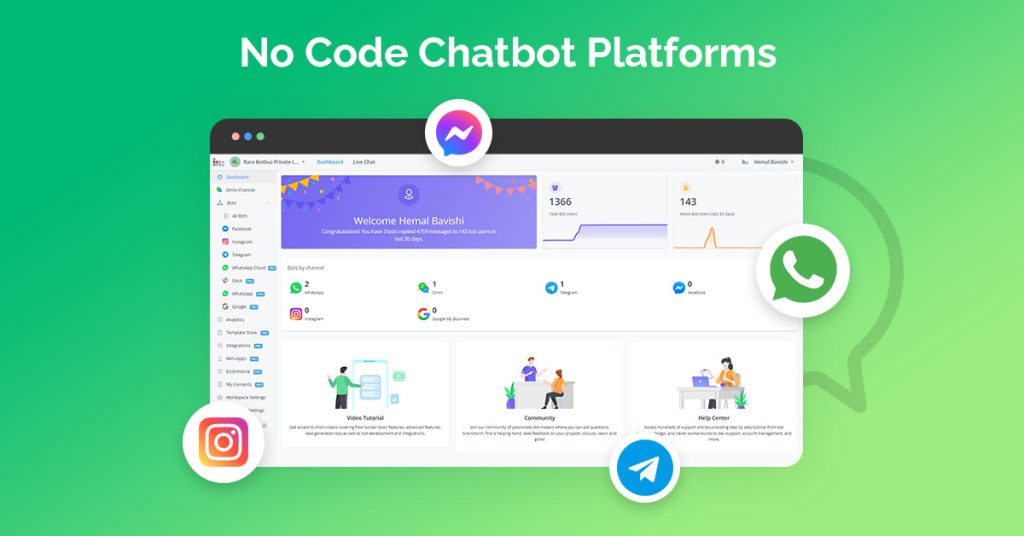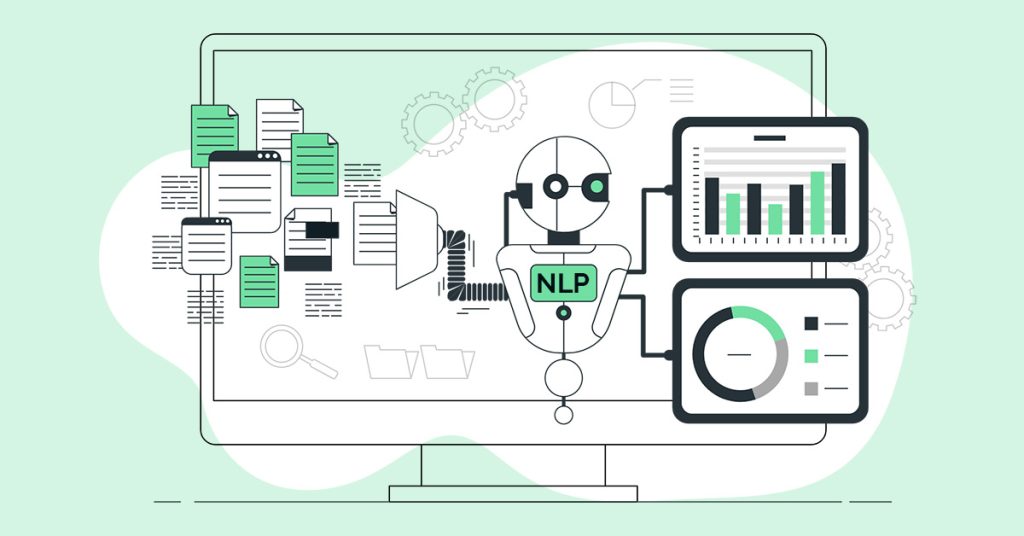- Significance of chatbots in modern business :
- Integrating chatbots across various chatbot channels :
- Understanding business objectives :
- Popular chat channels for business integration :
- Tailoring chatbot conversations for different channels :
- Technical considerations and compatibility :
- Integrate Botbuz Chatbot across diverse channels :
- Conclusion :
Significance of chatbots in modern business :
In the age of digital dominance, customer expectations have skyrocketed. They demand instant, personalized, and readily accessible support, 24/7. This is where chatbots, powered by artificial intelligence (AI), step into the spotlight. They’ve become indispensable tools for modern businesses. Thus, revolutionizing the way they interact with customers and conduct operations.
Integrating chatbots across various chat channels :
- Websites : Embed chatbots directly on your website for immediate assistance and lead generation.
- Social Media : Leverage chatbots on Facebook Messenger, Instagram, and other platforms. It helps to engage followers and answer questions directly.
- Messaging Apps : Integrate chatbots with popular messaging apps like WhatsApp and Telegram. It helps to connect with customers where they are already comfortable communicating.
- Mobile Apps : Enhance mobile app experience with a chatbot companion. It helps to provide personalized support and guidance.

Understanding Business Objectives :
Chatbots are no longer mere assistants; they’re strategic partners driving success. To unlock their full potential, an understanding of business objectives & customer interaction needs is crucial. This alignment forms the bedrock of a winning chatbot integration strategy.
Firstly, identify your business goals. Do you seek to boost conversions, elevate customer service, generate leads, build brand loyalty, or reduce costs? Align your chatbot’s functionalities to these objectives. For example, a lead-hungry e-commerce site equips its chatbot with lead-qualification tools and personalized recommendations.
Next, delve into customer interaction needs. They crave speed, relevance, convenience, accuracy, and the occasional human touch. Design your chatbot to address these desires. Offer 24/7 support, personalize responses based on data & provide a seamless interface. Remember, a chatbot that frustrates customers is worse than no chatbot at all.
Finally, align your chatbot strategy with specific objectives. For sales conversions, chatbot can guide customers through the purchase journey. It also helps to resolve purchase-related queries. For enhanced service, prioritize efficient FAQ handling & smooth escalation paths to human agents.
Popular Chat Channels for Business Integration :
In the digital realm, businesses have many options to reach customers through chat. It’s essential to understand each platform, their user demographics & how they harmonize with business goals. Let’s tune in to some of the most popular chat channels:
- Websites : The OG of online interaction, websites remain a crucial landing pad for customers. Embedding a chatbot here offers instant support. It guides visitors through product pages, and captures leads seamlessly. It’s perfect for businesses with clear conversion goals and tech-savvy customers.
- Facebook Messenger: Boasting over 2.9 billion active users, Messenger reigns supreme in social media communication. Integrating chatbot here connects you with a massive audience. It fosters casual yet personalized interactions & leverages familiar features like emojis and GIFs. Think e-commerce brands or customer service-focused businesses looking for a friendly touch.
- WhatsApp: The global messaging giant, with over 2 billion users, is ideal for mobile-first audiences. It provides convenience and privacy. Chatbots on WhatsApp can manage appointments, send reminders & personalize offers. It can answer FAQs. They are perfect for healthcare providers, service-based businesses, or those targeting international customers.
- Slack: The go-to communication platform for many workplaces. Slack integrates seamlessly with business tools and fosters internal collaboration. Adding a chatbot here can automate routine tasks like onboarding new employees. It can also answer common HR questions, or provide employee benefits information. This resonates with large companies, remote teams, and those prioritizing internal efficiency.
- Other Platforms: Don’t forget niche but powerful channels like Telegram (popular in Eastern Europe), Line (dominant in Japan), or Viber (strong in Eastern Europe and CIS countries). Tailoring chatbot integration to these regional preferences can unlock hidden customer segments. It can cater to specific demographics.
Beyond the platform itself, understanding the user demographics is key. Facebook Messenger, for example, attracts a younger audience, while Slack caters to professionals. WhatsApp appeals to mobile-first users, while Line is popular in tech-savvy communities. Matching your chatbot’s personality and functionalities to these demographics ensures a comfortable & effective interaction.
Tailoring Chatbot Conversations for Different Channels :
In the vibrant world of chatbots, your chatbot should adjust its conversation flow. It should respond based on the characteristics of each channel.
Here’s how to keep the conversation flowing across different platforms :
Website Chatbots :
- Focus on conversions : Guide users through product pages. It can answer purchase-related questions & offer personalized recommendations.
- Keep it concise : Users tend to be on a mission, so prioritize efficiency and clarity. Aim for short, informative responses.
- Provide multiple options :
- Offer buttons, menus, or quick links to navigate easily within the website.
Facebook Messenger Chatbots :
- Embrace the casual tone : Use emojis, GIFs, and a friendly, conversational style.
- Leverage Messenger features : Integrate polls, quizzes, or image sharing to make the interaction more engaging.
- Offer customer support : Answer FAQs, troubleshoot issues, and provide human agent handoff options.
- Prioritize privacy and security : Emphasize data protection and avoid overly personal questions.
- Focus on mobile-friendliness : Use short sentences, emojis, and voice notes for convenient communication.
- Personalize offers and reminders : Leverage user data to send exclusive deals. It can also appointment reminders, or personalized updates.
Slack Chatbots :
- Integrate with workplace tools : Connect with calendars, project management platforms, or HR systems for seamless workflow.
- Use relevant commands and keywords : Make it easy for users to trigger specific actions or access information efficiently.
- Maintain a professional tone : While helpful, avoid being overly informal or casual in the workplace environment.
Niche Platforms :
- Research platform-specific etiquette and user expectations : Adapt your chatbot’s personality and functionalities to the local communication style.
- Leverage local features and integrations : Connect with popular regional services. It also integrates platform-specific features for a more natural experience.
By tailoring chatbot’s conversation style & functionalities to the unique characteristics of each platform. One can create a seamless and engaging experience for your customers. This personalized approach fosters trust, boosts engagement. It ultimately drives success across the diverse landscape of chat channels.
Technical Considerations and Compatibility :
Compatibility Across Platforms :
Ensuring compatibility with various chat channels involves understanding their APIs and specific requirements. Here’s a peek at some key considerations :
- API Access : Each platform has its own API for developers to integrate chatbots. Choose platforms with well-documented APIs. It is readily available SDKs (Software Development Kits) for easier integration.
- Security and Data Privacy : Data security and privacy are paramount. Ensure your chosen platform adheres to strict security protocols and data protection regulations. It is especially for sensitive information like user credentials.
- Performance and Scalability : Consider the platform’s ability to handle high volumes of concurrent users. It maintains fast response times. Scalability is crucial for future growth and seamless performance.
- Feature Compatibility : Not all platform features translate well to chatbots. Analyze which platform features are crucial for your chatbot’s functionalities and ensure compatibility.
Integration Tools and Tactics :
To bridge the gap between chatbot & different platforms, variety of tools are available,
- Pre-built Connectors : Many chatbot platforms offer pre-built connectors. It is for popular chat channels like Facebook Messenger, WhatsApp and Slack. These connectors simplify integration and save development time.
- Custom Integrations : For complex integrations, custom development using the platform’s API might be necessary. This approach offers more flexibility but requires technical expertise.
- Cloud-based Solutions : Consider cloud-based chatbot platforms that offer built-in integrations with various chat channels. This eliminates the need for server management and simplifies deployment.
- API Monitoring and Testing : Continuously monitor API performance. Also test your chatbot’s functionality across different platforms. It ensures smooth interactions and identifies any potential issues.
Integrate Botbuz Chatbot across diverse channels :
Botbuz, a powerful no-code chatbot builder. It offers seamless integration with a variety of channels. Thus, allowing you to reach your audience wherever they are. Here’s a comprehensive guide to help you navigate the process :
Botbuz integrates with various popular channels, including :
- Website Chat : Embed your chatbot directly on your website for instant support and lead generation.
- Social Media : Connect with audiences on Facebook Messenger, WhatsApp, Instagram, Telegram, and more.
- Messaging Apps : Engage users on platforms like WhatsApp and Line for personalized interactions.
- Email : Automate email responses and provide customer support within your inbox.
- SMS : Send timely updates and reminders via text messages.
Botbuz offers various integration methods :
- Pre-built Connectors : Utilize Botbuz’s pre-built connectors for popular platforms like Facebook Messenger and WhatsApp.
- API Integration : For advanced customization, use Botbuz’s API to integrate with any platform or software.
- Zapier Integration : Leverage Zapier’s automation platform to connect Botbuz with other tools & services.
Conclusion :
In the vibrant marketplace of customer engagement, a new technology has emerged – the chatbot. But its power lies not in a solo performance, but in its ability to integrate across diverse channels. It is necessary to understand business needs & aligning it with strengths of each channel. Thus, transforming chatbot from a simple tool into a strategic partner. It helps in driving conversions, fostering relationships, and propelling your success.
Imagine your website where your chatbot welcomes visitors and guides them through the aisles of product pages and information. On social media, it engages audiences in casual conversations and builds brand loyalty. In messaging apps, it transforms into a personal assistant. Thus, offering convenient support and answering questions with a touch of intimacy. And across all channels, it maintains a consistent voice. Thus, reflecting your brand and resonating with your audience.
But the true beauty of this multi-channel symphony lies in its adaptability. Each platform presents a unique opportunity to personalize the experience. It tailors chatbot responses & functionalities to the specific needs & expectations of its audience. This allows you to create deeper connections, build trust & drive conversions.




